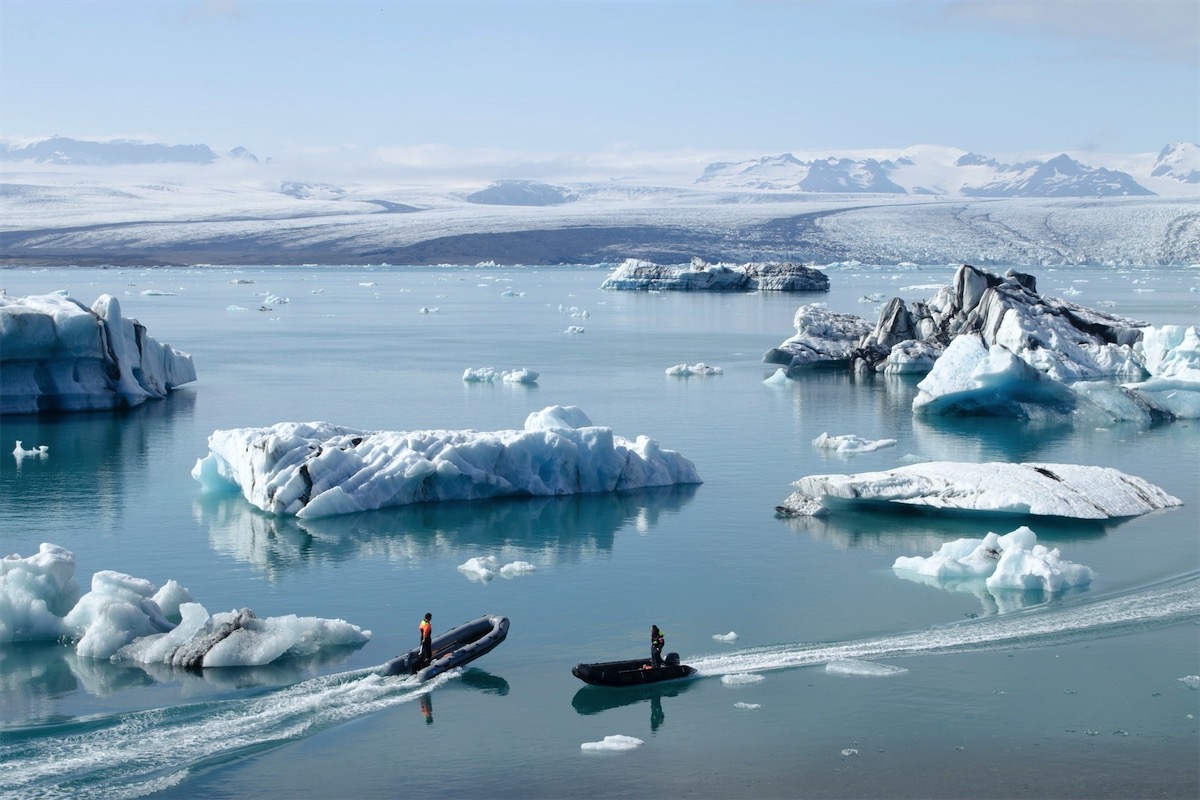December 8 - World Climate Day

Climate change - a challenge for the planet
The World Climate Day responds to an urgent need to find solutions to mitigate global warming. Created in 2017 by Non-Governmental Organizations (NGOs), it aims to raise public awareness of climate change and take actions to reduce global warming.
Climatologists are well aware of the alternation of warm and glacial periods and their repercussions on the survival of many animal species. These phenomena used to occur over long periods of time at geological scale. The current global warming also take its origin from human action and extends over a very short period that began in the last century. Today, human greenhouse gas emissions are causing a global warming estimated at 1°C.
The critical role of the ocean
The latest report of the French IPCC (Intergovernmental Panel on Climate Change), released in 2022, emphasizes the urgency of taking rapid, coordinated and sustainable action to stem the unprecedented changes in the ocean and cryosphere that are leading to global warming. The ocean, at the heart of the climate system, can store a very large amount of heat. It plays a major role on the thermal balance of the planet and is a major source of slow climate change.
Today, human activity causes the emission of 40 billion tons of CO2 each year. The terrestrial vegetation and the ocean assimilate more than 50% of these emissions. In particular, the ocean stores a very large amount of carbon - about 38,000 gigatons (Gt), or 16 times more than all land plants and soils, and about 60 times more than the atmosphere.
Without these two carbon "sinks", global warming would already be well above 1°C (compared to the pre-industrial era). In addition, the immense heat capacity of the ocean allows it to absorb more than 90% of the additional heat generated by global warming. However, this natural regulation causes negative processes such as the rise in sea level or the acidification of the ocean. Indeed, the melting of the 200,000 glaciers - continental glaciers and ice caps - present on the planet and the warming of sea water, linked to thermal expansion, caused a sea level rise of about 15 centimeters since 1900, and continues to grow from 1.4 to 3.6 mm / year.
Sea levels will continue to rise slowly for centuries after global warming stops. But this rise can vary from 20 centimeters to more than a meter by the end of the century depending on the amount of greenhouse gases emitted by humans.
In this latest IPCC report, the high range of forecasts is unfortunately increased. Indeed, knowledge and technological evolution allows us to better measure the melting of the Antarctic and its extreme consequences such as waves and coastal floods due to storms.
The COPs respond to climate issues
Faced with these climate challenges, 196 countries signed the United Nations Framework Convention on Climate Change with the aim to organize COPs (Conference of the Parties) and set global objectives to fight against global warming. Each year, representatives of States, indigenous peoples, civil society and the private sector meet to monitor the commitments, prospects and results of each country.
The COP27 objective was to implement the solutions that have been advocated for years to minimize the impacts of climate change, which are becoming more and more obvious. Today, 3.3 to 3.6 billion people (almost half of the planet) live in highly vulnerable areas. It also had to provide strong signals on the reduction of greenhouse gas emissions, which are too high to limit global warming to 1.5°C.
The positive outcome of this last COP, which took place in Sharm El-Sheikh, concerned the need to financially assist the countries most vulnerable to climate change. The creation of the "loss and damage" fund for developing countries is an interesting advance. But the 340 million euros announced seem insufficient in view of the needs. And above all, the vagueness surrounding the greenhouse gas emissions reduction pace remains. Are governments really changing their paradigm?
Still alarming figures
CO2 emissions in 2022 are expected to reach record levels, according to the latest data from the Global Carbon Project, published on November 11. The objective of containing global warming below 1.5°C is becoming more and more distant.
• Between 2005 and 2019, global GHG emissions increased by 23.6%, from 38,669 to 48,117 megatons of carbon dioxide equivalent (Mt CO2e).
• In 2019, the largest emitting country was China with 12,705 Mt CO2e or 26.4% of global GHG emissions. Since 2005, China's emissions have increased by 74.8%.
• In 2022, China's CO2 emissions are expected to reach 36.6 billion tons.
To reach carbon neutrality by 2050 and limit global warming to 1.5°C, greenhouse gas emissions must be reduced by 50% by 2030. However, according to demographic forecasts - 9 to 10 billion inhabitants on earth in a few decades - and economic forecasts, energy demand is expected to double by the second half of this century, rising from 12 gigatep (tone-oil equivalent) today to 20 gigatep.
So where do we start to address this huge challenge? Which economic and industrial sectors are most concerned? What are the figures worldwide?
In 2005, the World Resource Institute published a study on the sectors that emit the most CO2 in the world.
• Buildings: 16.5%, of which
- Residential buildings 10.2%,
- Commercial buildings 6.3%,
• Transportation 14.7%, of which
- Road transport 10.5%,
- Air traffic 1.7%,
- Rail, sea and other traffic 2.5%,
• Deforestation and forest management 12.2%,
• Miscellaneous industries 24.4%, of which
- Cement 5.0%,
- Chemical industries 4.1%,
- Iron and steel 4.0%,
- Aluminum and other metals 1.2%,
- Paper and Printing 1.1%,
- Machinery 1.0%,
- Food processing and tobacco 1.0%,
- Other industries 7.0%,
• Extraction of fossil fuels 7.7%,
• Agriculture excluding deforestation 15.2% of which :
o Breeding and breeding issued waste 5.4%,
o Agricultural soils 5.2%,
o Other agricultural production 1.7%,
o Rice cultivation 1.5%,
o Energy used in agriculture 1.4%,
• Landfill 1.7%,
This study has the merit of identifying the sectors that massively exploit fossil fuels: buildings and transport, especially road transport. Then agriculture generates CO2 emissions through deforestation, changes in land use, but also through direct emissions (livestock, rice cultivation ...). Some industries (energy extraction, cement, metals...) also have a high carbon footprint.
Geoscience, one of the key to the energy and ecological transformation
Currently, the use of carbon-based fossil fuels represents more than 80% of the energy: coal, oil and gas; the rest is provided by hydraulic, nuclear and very incidentally renewable energies (i.e: solar, wind, biomass, geothermal, marine). The path to replace fossil fuels is therefore very important and requires the massive use of geosciences. Beyond the search for hydrocarbon deposits, the geologists and geophysicists around the world leverage their knowledge and skills to help finding new solutions for a low carbon future. Geoscience still holds a bright future ahead with large scale deployment of solutions to
1) meet the urgent need for decarbonization of the planet to halt global warming, and
2) find new, renewable and sustainable powerful energy sources to replace fossil fuels before they dried up.
The main contribution of geoscience will be focused on:
• Massively and quickly explore for efficient CO2 storage reservoir with great capacity;
• Exploring natural hydrogen deposits as an electrogenic fuel;
• Exploiting geothermal energy;
• Searching for lithium, especially for electrical batteries
• Storing radioactive waste deep underground in a suitable environment;
• Finding the metals and critical elements needed in solar and wind energy industries
Eliis, a company involved into developing low-carbon solutions
World Climate Day remains a way to alert and interest the population in environmental issues. Eliis is involved in the research and development of low-carbon solutions to effectively participate in the fight against global warming. CO2 storage, natural hydrogen exploration and geothermal energy constitutes the major axes that actively mobilize Eliis and its experts in seismic interpretation.
Sources:
https://reseauactionclimat.org/cop27-ou-comment-repondre-aux-impacts-du-changement-climatique/
https://www.wri.org/data/world-greenhouse-gas-emissions-2005

